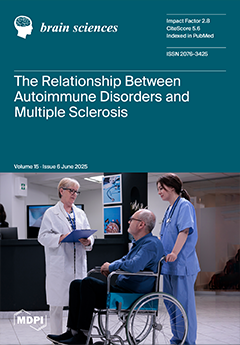Introduction: The monitoring of autonomic nervous balance during childhood remains underexplored. However, heart rate variability (HRV) is widely recognized as a biomarker of health risk across the lifespan. Juvenile idiopathic arthritis (JIA), a group of chronic inflammatory joint disorders, is associated with persistent inflammation and pain, both of which contribute to increased cardiovascular risk, commonly linked to reduced HRV. Among HRV parameters, very-low frequency (VLF) components have been associated with physiological recovery processes. This study aimed to assess HRV during sleep in patients with JIA.
Methods: We studied 10 patients with JIA and 10 age-, gender-, and Tanner stage-matched healthy controls. All participants underwent polysomnographic monitoring following an adaptation night in the sleep laboratory. HRV was analyzed using standard time and frequency domain measures over 5 min epochs across all sleep stages. Frequency components were classified into low- and high-frequency bands, and time domain measures included the standard deviation of the beat-to-beat intervals. Group differences in HRV parameters were assessed using nonparametric tests for independent samples, with a significance level set at
p < 0.05.
Results: JIA exhibited greater sleep disruption than controls, including reduced NREM sleep, longer total sleep time, and increased wake time after sleep onset. HRV analyses in both time and frequency domains revealed significant differences between groups across all stages of sleep. In JIA patients, the standard deviation of the normal-to-normal interval during slow wave sleep (SWS) and total power across all sleep stages (
p < 0.05) was reduced. In JIA patients, the standard deviation of the normal-to-normal interval during slow wave sleep and total power across all sleep stages were significantly reduced (
p < 0.05). VLF power was also significantly lower in JIA patients across all sleep stages (
p = 0.002), with pronounced reductions during N2 and SWS (
p = 0.03 and
p = 0.02, respectively). A group effect was observed for total power across all stages, mirroring the VLF findings. Additionally, group differences were detected in LF/HF ratio analyses, although values during N2, SWS, and REM sleep did not differ significantly between groups. Notably, the number of affected joints showed a moderate positive correlation with the parasympathetic HRV parameter.
Conclusions: Patients with JIA exhibited sleep disruption and alterations in cardiovascular autonomic functioning during sleep. Reduced HRV across all sleep stages in these patients suggests underlying autonomic nervous dysfunction. Addressing sleep disturbances in patients with chronic pain may serve as an effective strategy for managing their cardiovascular risk.
Full article






